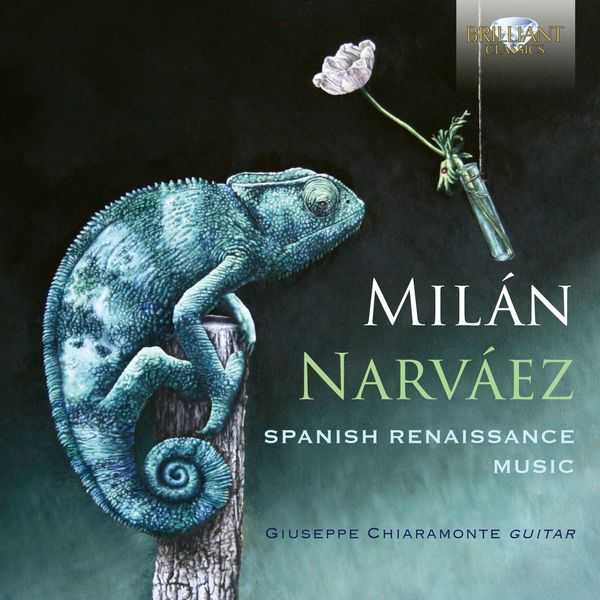

Composer: Luys Milán, Luys de Narváez
Performer: Giuseppe Chiaramonte
Format: FLAC (tracks)
Label: Brilliant Classics
Catalogue: 96217
Release: 2022
Size: 629 MB
Recovery: +3%
Scan: yes
01. Fantasia XXI
02. Fantasia X
03. Fantasia I
04. Pavana I
05. Fantasia XI
06. Fantasia II
07. Pavana II
08. Fantasia XII
09. Fantasia III
10. Pavana III
11. Fantasia IV
12. Pavana IV
13. Fantasia V
14. Pavana V
15. Fantasia XIV
16. Fantasia VIII
17. Pavana VI
18. Tentos IV
19. Fantasia II
20. La cancion del emperador
21. Fantasia III
22. Veynte y dos diferencias de conde claros
23. Fantasia V
24. Fantasia VI
25. Quatro diferencias sobre guardame las vacas
26. Otras tres diferencias hechas por otra parte
27. Baxa de contra punto
In 2020, Giuseppe Chiaramonte starred in a SKY TV documentary about the solo-guitar fantasias of the 19th-century Hungarian composer Johann Kaspar Mertz. These pieces formed the subject of his debut in Brilliant Classics, for an album which won acclaim in the specialist-guitar press for the warmth of Chiaramonte’s sound, the palette of his tonal colours and his adventurousness in reviving the music of a composer deservedly once known as the “Liszt of the guitar”. Mertz’s 16th-century equivalent was undoubtedly Luys Milán (1500-1560), who referred to himself without false modesty as El Maestro and a second Orpheus. Published under his name in 1536, El Maestro is the first printed collection of music for the vihuela; the earliest Spanish collection of solo instrumental music and accompanied songs; and the first printed example of guitar tablature in Spain.
Milán was a guitar (vihuela/lute) storyteller par excellence, and they call for performers of commensurate skill. His fantasias evolve from the very nature of the instrument for which he composes, being composed at the instrument as elaborate improvisations and then later committed to paper. The six pavans in Milán’s collection resemble the dances of the same name from further north in Europe, though less afflicted by melancholy. They illuminate in turn the more intricate polyphony of the fantasias and tientos composed by a shorter-lived contemporary, Luys de Narváez, who died in 1550, barely into his mid-20s. Thus deprived of further experience, Narváez was still writing in a more restrained idiom than Milán, though no less affecting in its way.
It was largely thanks to these two composers that the vihuela attained such popularity in 16th-century Spain, and modern audiences may appreciate the poetry of their music once more thanks to the inspired advocacy of Giuseppe Chiaramonte, who introduces the life and work of both composers in a detailed booklet essay accompanying the album. “The best performances of Mertz’s solo pieces that I have heard… revelling more wholeheartedly in the virtuosity of the music. The instrument played by Giuseppe Chiaramonte is a joy in itself.” (MusicWeb)
This recording includes works from the first two publications, Milán’s Libro de música de vihuela de mano intitulado “El Maestro” and Narváez’s Los seys libros del Delphín de música de cifras para tañer vihuela, played on a Hauser-model guitar built by Italian luthier Mario Grimaldi in 2020.